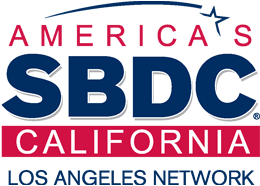If you hold patents, have patents pending or are thinking of filing a patent, then it’s time for you to get to know the details of the most significant reform of the U.S. patent system in more than a century.
On September 16, 2012, the Leahy-Smith America Invents Act (AIA) of 2011 was signed into law, signaling an historic overhaul of the patent system. According to the U.S. Patent and Trademark Office (USPTO), the provisions of the AIA will “spur innovation and economic growth by streamlining the patent application process and introducing new procedures to ensure patent quality.”
So what does this mean for small business owners to whom patents are valuable assets? Here’s what you need to know:
You and Your Competitors Can Now Give Input on Pending Patent Applications
For the first time in the history of U.S. patent law, third parties can now come forward and challenge patent applications. For example, if you know of someone who is trying to file a patent on a product that would interfere with your business, you now have an opportunity to provide information to the patent examiner to help them determine whether the innovation in the application is patentable.
“By introducing third party input into the examination process for the first time since the inception of our nation’s intellectual property system, we’re able to expand the scope of access to prior art in key areas like software patents,” said Undersecretary of Commerce for Intellectual Property and Director of the USPTO David Kappos in this press release.
To support this change, in October 2012 the USPTO launched a crowdsourcing tool – AskPatents – to solicit input on patent applications. If you are concerned about a particular patent, you can post questions and challenge patent applications online. USPTO patent examiners will take these comments into consideration when reviewing applications. Inventors can also check the site to see if their idea is patentable.
Resolving Patent Disputes Just Got a Whole Lot Easier
In the past, if you were to contest a patent or a competitor filed a patent dispute against your business, you could expect the process to involve costly legal fees and drawn-out litigation in district courts. Under the provisions of the AIA, however, the USPTO offers a “timely, cost-effective alternative to district court litigation for challenging the patentability of a claimed invention in an issued patent.” Under this provision, the USPTO handles post-grant reviews (for a fee), resolving disputes more quickly and saving small business owners the hassles of dragging a patent dispute through the courts.
In a nutshell, these provisions “…establish a more efficient and streamlined patent system that will improve patent quality and limit unnecessary and counterproductive litigation costs,” said USPTO’s David Kappos.
More to Come
Look for additional provisions to come from the AIA in March 2013, when the U.S. patent system moves from a first-to-invent to a first-inventor-to-file system. This will bring the U.S. in line with other nations and make it more important than ever for small businesses to consider filing a provisional patent application and engage a patent lawyer as soon as possible.
Read more about the new and upcoming changes on the USPTO website: Historic Patent Reform Implemented by U.S. Patent and Trademark Office.
Related Resources
- SBA Guide to Small Business Intellectual Property
- Is your Business Idea Patentable? A Guide to What Entrepreneurs Can Patent
- Protect your Invention or Product – Patents, Trademarks, and Copyright Explained





